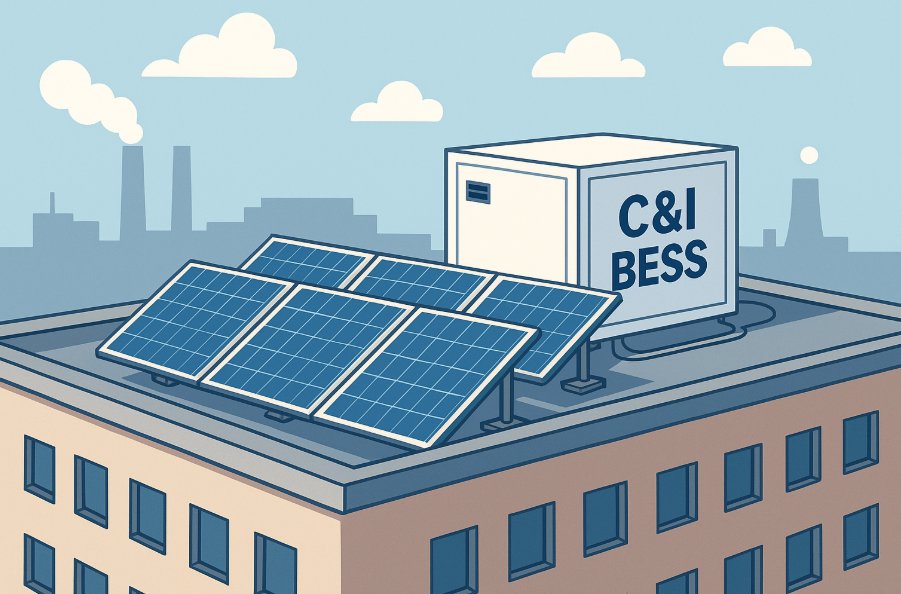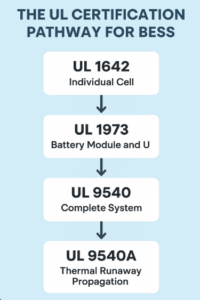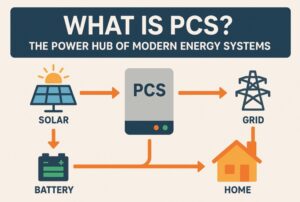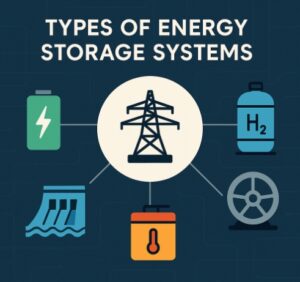- You have no items in your shopping cart
- Subtotal: $0.00

What is C&I BESS?
C&I BESS stands for Commercial and Industrial Battery Energy Storage System. It refers to large-scale battery systems designed to help businesses manage their electricity more efficiently.
These systems allow companies to store energy — from the grid or renewable sources like solar — and use it when electricity prices are high or when there’s a power outage.
Unlike small home systems, C&I BESS units are built for factories, malls, data centers, warehouses, and other large energy users. They are key to energy cost savings, backup power, and renewable energy integration.
To understand more about how these systems work in practice, visit SunLith Energy.
Why Businesses are Adopting C&I BESS
C&I BESS adoption is growing rapidly because it offers multiple benefits that align with business goals.
1. Lower Energy Costs
Energy costs can be unpredictable. With a C&I BESS, companies can charge batteries during off-peak hours and discharge them during high-tariff periods — a process known as peak shaving or load shifting.
2. Improved Energy Resilience
Power outages can cause downtime and financial losses. Battery systems act as instant backup power, keeping operations running without interruption.
3. Renewable Energy Integration
Many businesses install rooftop solar panels but can’t always use all the generated energy immediately. A C&I BESS stores excess solar power for use later, improving energy independence.
4. New Revenue Opportunities
Businesses can even earn income by participating in grid services — selling stored energy back to the grid when demand is high.
You can explore these business applications in detail on SunLith Energy’s C&I BESS page.
Key Components of a C&I BESS

A C&I BESS is made up of several critical parts that work together to store, control, and deliver energy efficiently.
Battery Modules – Usually made from lithium-ion (LFP) cells that offer high safety and long life cycles.
Battery Management System (BMS) – The BMS monitors the battery’s health, voltage, and temperature to ensure safe operation.
Power Conversion System (PCS) – Converts stored DC power to usable AC power for the facility and manages charging and discharging.
Energy Management System (EMS) – The “brain” of the operation. It controls energy flow, manages grid interaction, and optimizes cost savings.
Thermal Management System – Maintains safe operating temperatures through cooling systems and ensures longevity.
Enclosure & Protection Systems – Industrial-grade housings protect the system from weather, dust, and physical damage while including safety devices like fire suppression and circuit protection.
For a detailed component breakdown, check SunLith Energy’s guide on C&I BESS components.
Top Applications of Commercial and Industrial Battery Energy Storage System
1. Peak Shaving and Load Shifting
Battery systems discharge power during peak demand times, lowering the facility’s electricity bills and avoiding penalties for high demand.
2. Backup Power and Resilience
A Commercial and Industrial Battery Energy Storage System acts as an instant backup during blackouts or power fluctuations, protecting critical operations like data centers or production lines.
3. Renewable Energy Storage
Stores surplus solar or wind power and releases it when needed, reducing grid dependence and supporting clean energy goals.
4. EV Charging Support
For companies adopting electric vehicle fleets, a BESS can handle charging surges and balance grid load effectively.
5. Grid Participation and VPP Integration
Many systems now connect to Virtual Power Plants (VPPs), allowing businesses to sell power or stabilize the grid — creating an extra income stream.
Learn more about these real-world use cases from SunLith Energy’s C&I BESS Applications.
How to Implement a C&I BESS System
Deploying a commercial energy storage system involves proper analysis and planning. Here are best practices to follow:
- Analyze Load and Tariff Data: Understand your energy consumption pattern and demand charges before sizing the system.
- Select the Right Capacity: Match your goals — whether cost savings, backup power, or renewable integration.
- Ensure Compliance and Safety: Systems must meet UL 9540A, IEC, and local regulations.
- Integrate with EMS and Renewables: Smart control systems maximize battery performance and energy efficiency.
- Plan for ROI: Calculate savings from reduced peak demand, grid services, and avoided downtime to assess payback period.
SunLith Energy emphasizes that good system design and integration are key to getting the most from your investment.
Partner Spotlight: SunLith Energy
Choosing the right technology partner is essential for successful deployment.
SunLith Energy is a trusted name in Commercial and Industrial Battery Energy Storage System innovation. They specialize in designing, integrating, and optimizing large-scale energy storage systems for commercial and industrial users.
Their resources — such as “Key Components of Commercial and Industrial Battery Energy Storage System” and “Top Applications of C&I BESS” — are valuable for anyone exploring this field.
Future of Commercial and Industrial Battery Energy Storage System
The future of C&I BESS is bright and rapidly evolving. Battery costs are dropping, system efficiency is improving, and new business models are emerging.
Key trends include:
- Longer-duration energy storage (4–8 hours and beyond)
- Integration of multiple sites into Virtual Power Plants (VPPs)
- Stronger policy incentives for storage adoption
- Safer and more advanced battery chemistries like LFP and solid-state
These innovations are turning Commercial and Industrial Battery Energy Storage System from a backup solution into a central part of business energy strategy.
Summary: Why Every Business Should Consider Commercial and Industrial Battery Energy Storage System
C&I BESS is more than a battery — it’s a strategic energy investment. It helps reduce costs, improve reliability, enable renewable energy, and even create new revenue opportunities.
If your company consumes large amounts of electricity or relies on consistent power, investing in a Commercial and Industrial Battery Energy Storage System can enhance resilience and sustainability.
To learn more about technical insights and real-world applications, visit SunLith Energy’s C&I BESS resources.
Stay tuned on 24x7DIY.com for our upcoming posts on system sizing, ROI modeling, and deployment best practices for commercial battery storage.
📘 FAQ – C&I BESS (Commercial & Industrial Battery Energy Storage Systems)
1. What is a C&I BESS?
A C&I BESS, or Commercial & Industrial Battery Energy Storage System, is a large-scale battery system that helps businesses store electricity for later use. It improves power reliability, lowers energy costs, and supports renewable energy like solar and wind.
2. How does a C&I BESS save money for businesses?
C&I BESS units allow companies to charge batteries during off-peak hours when electricity is cheap and discharge them during peak demand. This process, called peak shaving or load shifting, helps reduce demand charges and total energy bills.
3. What are the main components of a C&I BESS?
Battery modules (often lithium-ion)
Battery Management System (BMS)
Energy Management System (EMS)
Thermal management and protective enclosures
Each component plays a role in energy storage, conversion, and safe operation.
4. How does a C&I BESS integrate with renewable energy?
A Commercial and Industrial Battery Energy Storage System stores excess solar or wind energy and releases it when needed, making renewable systems more reliable and efficient. It helps maximize self-consumption and reduces dependence on the grid.
5. What are the top applications of C&I BESS?
Common uses include:
- Peak shaving and load shifting
- Backup power and grid resilience
- EV charging support
- Renewable energy storage
- Virtual Power Plant (VPP) participation
These applications help businesses cut costs and improve sustainab
6. How safe are modern C&I BESS systems?
Modern systems follow strict standards like UL 9540A and IEC 62933, include advanced fire protection, temperature control, and intelligent monitoring. Partners such as SunLith Energy focus strongly on safety and compliance in their designs.
7. What is the future of C&I BESS technology?
The future includes longer-duration batteries, improved lithium-iron-phosphate (LFP) chemistry, integration into Virtual Power Plants, and new business models where companies can earn by supporting the grid.



